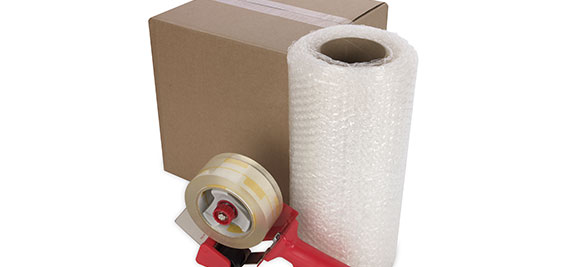
Climate-controlled and non-climate-controlled units. Join the best conventional mini-storage facility in Topeka. Contact Us!
Proper Packing Will Keep Your Items Save in Storage
May 5, 2015 | posted by admin | in Tips

Self storage is a great solution for both short-term and long-term storage, freeing up space at home while keeping your belongings safe and accessible. But before you put your possessions into storage, be sure to pack them the right way to ensure they’re protected.
Start by assembling the supplies you’ll need to properly pack all of your belongings. Most of the packing items you need can be found at AAA Self Storage.
- Boxes – Select sturdy, professional-grade boxes. Avoid the temptation to go gather boxes from the local grocery store, which are not as sturdy. You can also opt for plastic containers, which will keep out dust and moisture. Try to use similarly sized boxes to make it easy to stack them.
- Packing paper and bubble wrap – Use ink free packing paper or bubble wrap to wrap items, especially fragile ones, before placing them into boxes.
- Tape – Have plenty of tape on hand to seal up cardboard boxes.
- Labels – Labeling every box with the contents will make it easier to find what you need later.
- Notebook and pen – Use these to keep an inventory of what you have packed.
- Scissors or box knife
- Paper padding – Use paper padding to wrap all of the items that are not going into boxes to provide an extra layer of protection. Paper padding replaces the need for moving blankets.
- Cedar chips – These will protect clothing and other fabric items from moths and other pests.
- Moisture absorbing packets – They will pull moisture from the air to reduce the likelihood of mildew, mold, and musty odors.
- Furniture polish – Apply furniture polish or wax to wood furniture to add an extra layer of protection against moisture and humidity.
- Mattress bags and sofa covers – Use these specially designed bags to protect mattresses and fabric furniture from dust and moisture.
- Tarp or plastic sheeting – Cover the floor of your storage unit with a tarp or plastic sheeting as an extra layer of protection against moisture or humidity. It can also be used to cover items to protect them from dust.
How you pack your items will affect the unpacking process. There are steps you can take while packing that will make unpacking easier and faster. Start by weeding out items you no longer want or need. This will reduce the amount of items you need to pack and store. As you’re packing, pack one room at a time and organize everything by room or by like items. And be sure to label every container with a detailed list of its contents. This will make it easier to find what you need later.
As you begin packing, keep the following tips in mind:
- Make sure everything is clean and dry before packing it into boxes or placing it into storage. Any moisture in stored items could lead to mildew or mold.
- As you pack boxes, fill them as full as possible to reduce the number of boxes needed and save space.
- Be sure to distribute weight evenly within boxes.
- Label every box with a detailed list of the contents and mark ones that contain fragile items.
- As you move boxes into your storage unit, place the heaviest boxes on the bottom and stack lighter boxes on top.
- Place boxes or items that you anticipate needing to access frequently at the front of your self-storage unit.
- Leave an aisle in your storage unit so that you can access boxes in the back if needed.
Some items need specific preparation before putting them into storage:
Appliances – Clean them thoroughly and drain all of the hoses completely. Consider putting baking soda inside. Leave the door slightly ajar.
Wood furniture – Clean and wipe wood furniture with a high-quality furniture polish or wax to keep it from drying out and to protect it from moisture. Disassemble it if possible to make it easier to store. If you do disassemble it, put all of the screws, bolts and other small parts in a plastic bag. Label the bag and tape it to an unfinished surface on the item. Wrap the furniture in paper padding and label it.
Fabric furniture – Clean it and allow it to dry completely. If possible, remove the legs and wrap, label, and place them in a separate box. Cover the furniture in padded paper or a sofa bag.
Electronics – If possible, pack electronics into the original packaging to keep it secure and protected. If you don’t have the original box, pack it into a moving-grade box and surround it with crushed paper. Label the box and mark it as fragile.
Tools – Any tools containing gasoline or oil should be drained before storing.
Clothing – Wash and completely dry clothing before storing. Washing them prior to storage will help prevent stains. Fasten all buttons, snaps, and zippers. Folded clothing can be stored in cardboard boxes or plastic containers. Hanging clothing should be hung on sturdy hangers and covered with a garment bag or stored in a wardrobe box.
Books – Don’t pack too many in each box or the boxes may get too heavy. Lay books flat to protect the spines. Alternate them so that the spines face the opposite direction on every other book.
Dishes and other breakable items – Use more padding than you think you’ll need. Put larger items on the bottom and smaller items on the top. Line the bottom of the boxes with crumpled newsprint for cushioning. Purchase dish and glass kits that are specially designed cardboard dividers with foam pouches for the ultimate protection of your valuable breakables.

